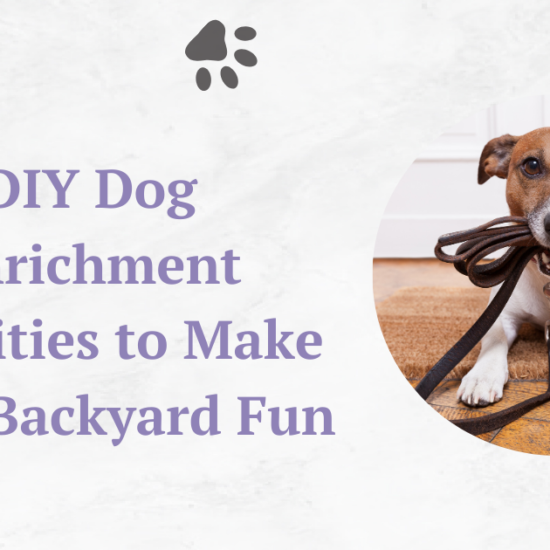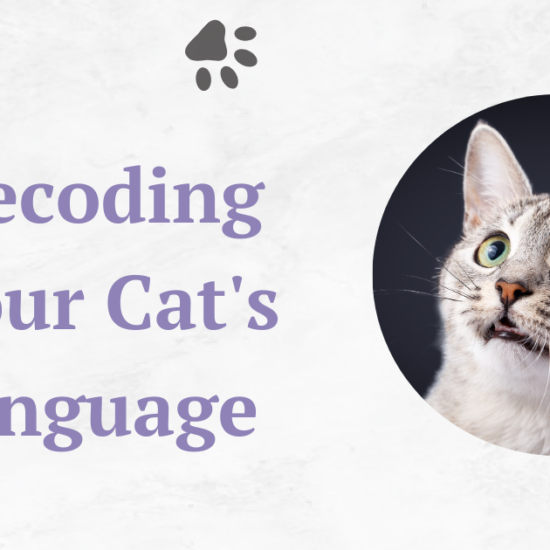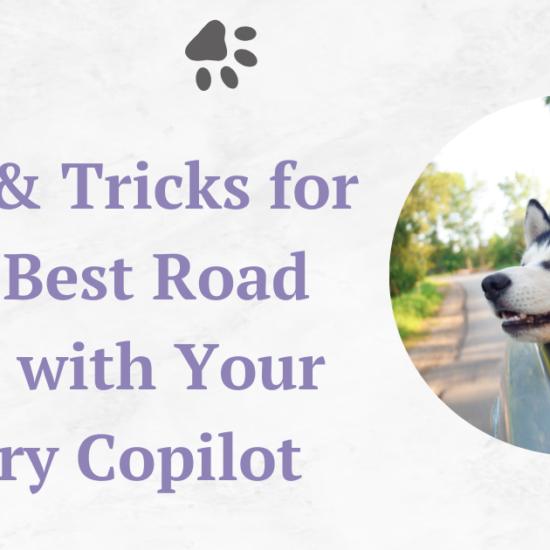Dogs, also known as “man’s best friend,” have been bred for a variety of reasons over the centuries. Some varieties were created for herding, while others were created for hunting and companionship. Some of these different breeds excel at athleticism and have exceptional agility and stamina.
Table of Contents
Introduction
These athletic dog breeds are not only visually striking, but they also make great companions for busy people and families. In this post, we’ll look at the top ten most athletic dog breeds and what makes them unique in terms of athleticism, endurance, and physical ability.
How to Choose the Most Agile Dog Breeds
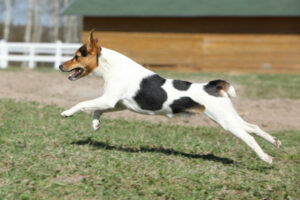
Choosing a highly active dog breed necessitates careful thought and an in-depth understanding of your own lifestyle, interests, and capabilities. Active breeds often require more exercise, training, and mental stimulation; therefore, you must guarantee that you can meet these requirements. Here are some guidelines to help you choose the most athletic dog breed for your lifestyle:
Lifestyle: Consider your daily routine, level of exercise, and the amount of time you can devote to your dog. Do you enjoy hiking, running, or other outdoor activities? Or do you lead a more sedentary existence? Be truthful with yourself about your level of exercise.
Breeds: Analyse numerous active dog breeds to learn about their activity needs, temperament, and compatibility for your lifestyle. Look for breed qualities that match your requirements and preferences. Use credible sources such as breed books, websites, and breed-specific clubs.
Size Matters: Consider the dog’s size. Larger breeds may require more space and exercise, although smaller breeds can frequently meet their needs for activity indoors or in a smaller yard. Your living circumstances, whether you live in an apartment or a house with a yard, may have an impact on your decision.
Temperament and Personality: Each active breed has a unique personality. Some are easily trained and ready to comply, but others are more independent and resistant. Consider whether you want a social, protective, or laid-back dog.
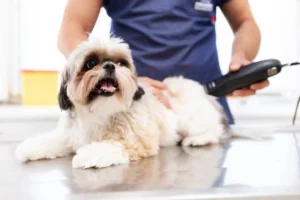
Grooming Requirements: Consider the grooming requirements of the breed you’re considering. Some athletic breeds have thick coats that must be groomed on a regular basis, while others have short, low-maintenance fur.
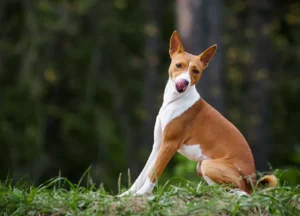
Health and Longevity: Learn about the breed’s typical health issues. Some active breeds are predisposed to specific health difficulties, and being aware of these potential issues can help you plan for the future.

Meet the Breed: If at all feasible, go to breeders, rescue organizations, or dog owners who have the breed you want. Spend time with the dogs to acquire a sense of their temperament and behavior.

Consider the Dog’s Age and Activity Level: Puppies of active breeds can be a handful, necessitating continuous training and socializing. If you are not prepared for the challenges of rearing a puppy, an adult dog may be a better choice.

Commitment to Training: Highly energetic animals frequently demand more training and mental stimulation. Be prepared to invest time and effort in training to keep your dog happy and well-behaved.
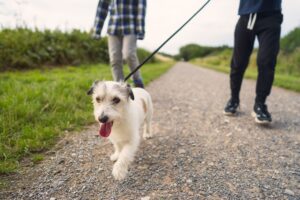
Strategy for Exercise: Make a strategy to provide daily exercise and mental stimulation. Regular walks, playtime, off-leash runs, and possibly participation in dog sports or activities such as agility or obedience training are all examples of this.
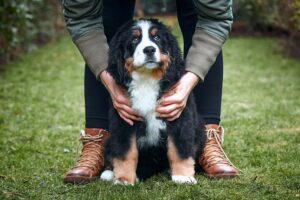
Consider Adoption: Don’t forget to look for active dogs in rescue organizations and shelters. There are numerous agile dogs looking for loving homes. Adoption can be a wonderful experience.
Consult a Veterinarian: Talk to a veterinarian about your options, especially if you have specific concerns or requirements about your health and activity levels. A veterinarian can provide advice depending on the breed’s probable health issues.
Be Prepared to Make a Lifetime Commitment: Choosing a dog is a long-term commitment. Dogs can live for a decade or more, so be sure you’re prepared to meet their demands for the rest of their lives.
Choosing an athletic dog breed is a big decision that takes time, effort, and attention. When you pick the correct breed for your lifestyle and degree of activity, you’ll have a devoted and active friend who will provide you with delight for many years to come.
Top Ten Most Active Dog Breeds
- Border Collie
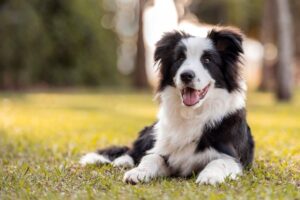
The Border Collie, sometimes known as the “Einstein of dogs,” is recognized for its exceptional agility, speed, and intellect. Originally designed to herd sheep, these dogs can run, change direction quickly, and retain endurance for long periods of time. Border Collies excel in canine sports such as agility and flyball, demonstrating their excellent athletic abilities.
Their sharp minds enable them to understand complex commands and respond to a variety of indications, making them agility competition stars. They are also recognized for their unwavering work ethic, which makes them ideal companions for long treks, frisbee, and other energetic outdoor sports.
- Australian Sheepdog

Despite its name, the Australian Shepherd was developed in the United States, not in Australia. These canines are well-known for their tremendous energy and athleticism. They perform admirably in herding, agility, and other dog sports. Australian Shepherds are not only visually appealing but also physically robust, with their stunning merle coats and startling blue eyes.
They are good candidates for agility classes and other physically demanding activities due to their agility, quickness, and intelligence. Australian Shepherds thrive on exercise and mental stimulation, making them excellent companions for those who are active.
- Belgian Malinois

Because of its exceptional athleticism and work ethic, the Belgian Malinois is frequently used in police and military jobs. The agility, speed, and endurance of this breed are well-known. Belgian Malinois are exceptionally nimble athletes, with an astonishing ability to leap, sprint, and pivot on a dime. They are frequently involved in activities such as Schutzhund, which entails obedience, tracking, and protection duties, demonstrating their adaptability.
These dogs are recognized for their unwavering loyalty and determination, which makes them excellent companions for a variety of duties, including agility training and protective work.
- German Shepherd

German Shepherds are another breed that is well-known for their agility and intelligence. These dogs, who were originally bred for herding, have evolved to thrive in a variety of professions, including search and rescue, police work, and agility competitions. Their robust body, powerful legs, and sharp minds make them ideal for physically demanding activities.
German Shepherds are also well-known for their devotion and protective qualities, making them not only agile but also dependable working and companion dogs.
- Siberian Husky

Siberian Huskies are noted for their amazing endurance and stamina. Originally raised to pull sleds in tough conditions by the Chukchi people of Siberia, these dogs have evolved into exceptional athletes. Their thick double coat protects them from freezing weather, while their powerful legs and agile bodies allow them to haul big objects over great distances.
Siberian Huskies enjoy running and succeed at activities such as mushing and canicross, which allow them to use their natural abilities. They are one of the most athletic dog breeds due to their ability to cross rough terrain and work tirelessly in harsh situations.
- Labrador Retriever

Labrador Retrievers are well-known for their warm and accessible personality, but they are also extremely sporty. Labs were originally trained to retrieve animals during hunting expeditions; thus, they have robust, muscular bodies and incredible stamina. They are strong swimmers who thrive in water sports such as dock diving and waterfowl retrieval.
Because of their athletic qualities, as well as their amiable and trainable disposition, they are popular options for many canine sports and outdoor activities. Labs make excellent hiking, running, and swimming partners.
- Vizsla

The Vizsla, sometimes known as the “Velcro Vizsla” because of its friendly demeanor, is a very athletic breed. These dogs were developed for hunting in Hungary and have a lean, muscular body. Their eye-catching rust-colored coat and expressive eyes add to their visual charm.
Vizslas are well-known for their agility, speed, and endurance. They excel at sports such as agility, flyball, and hunting trials. Because of their strong desire to please their owners, paired with their athleticism, they make excellent partners for a variety of sports and activities.
- Doberman Pinscher

Doberman Pinschers are known for their athleticism and sleek, strong body. They are swift and quick on their feet and were originally bred for guarding and protective jobs. Doberman pinschers have a powerful and muscular body, making them formidable competitors in agility and other physically demanding sports.
They are extremely trainable due to their intelligence and loyalty, and they thrive on activities that push their minds and bodies. Dobermans make ideal companions for individuals looking for an active and protective friend.
- Jack Russell Terrier

Jack Russell Terriers are little in stature but enormous in athleticism and activity. These energetic tiny dogs are well-known for their agility and endurance. They were originally intended for hunting and have a strong prey drive. They enjoy sports such as earthdog trials and agility courses.
Jack Russells are constantly on the move, and their small size allows them to navigate obstacles and demonstrate outstanding agility. They are modest in size, yet they have the heart and athleticism of a much larger dog.
- Whippet

The Whippet is known as the “poor man’s racehorse” because of its exceptional speed and agility. These slim dogs were designed for racing and can reach speeds of up to 35 miles per hour. Whippets thrive at lure coursing, a sport in which they chase a mechanical bait while displaying their amazing sprinting skills.
Whippets are swift and agile, having an elegant and slim body. They make excellent companions for anyone looking for an athletic dog who will also curl up on the couch when not in motion.
How to Motivate a Dog to Exercise
Physical activity, mental stimulation, and positive reinforcement are all used to train a dog to be more active. Whether you have a high-energy breed or a more laid-back one, getting your dog moving is important for their overall health and well-being. Here are some suggestions to help you train your dog to be more active:

Assess Your Dog’s Health: Before beginning any new fitness plan, speak with your veterinarian to ensure your dog is healthy and free of any underlying health conditions that could limit their activity level.
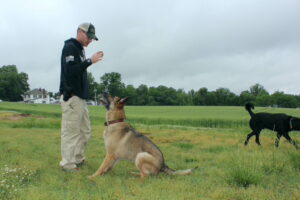
Select Appropriate Activities: When choosing activities, keep your dog’s breed and specific preferences in mind. Some dogs prefer running, hiking, or agility training, but others prefer fetch or interactive toys. Choose activities that are tailored to your dog’s abilities and interests.

Create a Routine: Dogs thrive on routine. Make a regular plan for exercise and playtime. A daily schedule prepares your dog for exercise, making them more interested and energetic at these times.
Note: There might be affiliate links mentioned here. We may receive a commission if you purchase a product through an affiliate link. There is no additional charge for you. Please do your own research before making any online purchases.
Begin Slowly: If your dog isn’t used to regular exercise, begin with shorter, less intensive exercises and gradually progress to longer, more difficult ones. This method prevents injuries and gradually increases your dog’s stamina.

Use Positive Reward: When your dog engages in active action, reward them with goodies, praise, and affection. Positive reinforcement will encourage your dog to stay active.

Teach Basic Commands: Basic commands such as “sit,” “stay,” and “come” are necessary for controlling your dog while participating in activities. They contribute to your dog’s safety and mental stimulation. If you need assistance with training, consider enrolling in obedience classes.
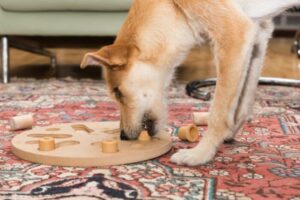
Add Variety: Keep activities interesting by incorporating a range of exercises and games. Dogs can become bored with the same routine, so change it up to keep their interest.
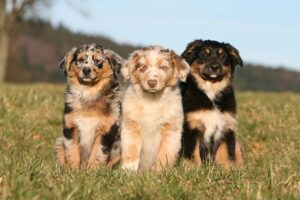
Include More Dogs: Arrange playdates with other dogs to foster social connection and provide an outlet for your dog’s energy. Off-leash dog parks can be great locations for your dog to mingle and have fun.

Toys and Puzzles: Purchase interactive toys and puzzle feeders. These toys stimulate your dog’s thinking and can keep them entertained for long periods of time. Physical activity is not as vital as mental stimulation.
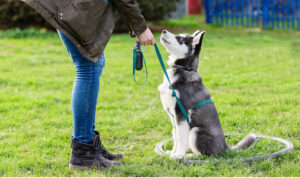
Leash Training: Teach your dog how to walk on a leash properly. Daily walks provide exercise and a change of environment, both of which are important for a dog’s mental health.
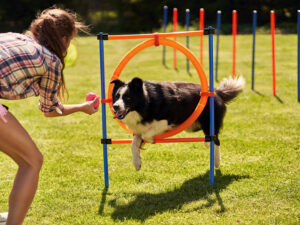
Agility and Obstacle Course Practice: If your dog enjoys agility training, set up a mini-obstacle course in your backyard or enroll in local agility classes. These activities put both the mind and the body to the test.

Consider Professional Training: If you’re having trouble encouraging your dog to be active or if they have behavioral issues, enroll them in professional training programs or talk with a dog trainer.

Be Patient and Consistent: It may take some time to train your dog to be active, especially if your dog is not naturally oriented toward high-energy activities. Be persistent and patient in your endeavors.
Check on Health: Keep an eye on your dog’s health and make sure they’re getting adequate rest. Excessive exercise can result in injury or weariness. Rest days are critical for healing.
Stay Safe: Ensure your dog’s safety during activities by providing proper equipment, such as a sturdy harness and leash. Also, keep extreme weather conditions in mind, such as high heat or cold.
Training your dog to be more active benefits both your physical fitness and the bond you share with your canine companion. You can encourage your dog to live a more active and satisfying life with persistent effort, positive reinforcement, and a strategic approach to their unique requirements and preferences.
FAQs
What are the distinguishing traits of an athletic dog breed?
Athletic dog breeds are characterized by agility, speed, endurance, and physical prowess. Because of their intrinsic qualities, these breeds excel in a variety of athletic activities and sports, and they frequently have a strong work ethic.
Is it possible for any dog to become an energetic dog, or does it depend primarily on the breed?
While any dog can become more active with the correct training and motivation, certain breeds are born with more energy and athleticism. Selecting an energetic breed can make the process easier, but dogs of all kinds can be encouraged to be more active.
What are some frequent health concerns when training an active dog?
It is critical to keep track of your dog’s overall health, including weight, joints, and energy levels. Regular vet visits are essential. Keep an eye out for potential injuries during high-impact activities, and make sure your dog is well hydrated and protected from extreme weather.
How much exercise does an average active dog require?
The quantity of activity required by an active dog varies according on breed, age, and individual traits. Active dogs require at least an hour of physical activity every day on average, but it can be more for particular breeds.
Can I train my dog to be more active if he or she is more laid-back?
Yes, a dog with a laid-back personality can be trained to be more active. Although patience and positive reinforcement are required, gradually introducing exercise and entertaining activities can inspire even the most sedentary dogs to become more active.
Is it vital to keep a dog active by participating in dog sports and agility training?
It is not necessary to participate in dog sports or agility training, but it can be a fun and helpful method to keep your dog active. Regular exercise and playing are frequently enough to keep your dog active and healthy.
How can I keep my dog from overexerting himself?
To avoid overworking your dog, keep an eye out for signs of weariness, excessive panting, or limping. Allow for rest and recovery days, especially if your dog is participating in high-energy activities, and adapt training intensity to meet your dog’s fitness level.
How important is mental stimulation to keeping a dog active?
For a dog to stay active, mental stimulation is just as necessary as physical activity. Puzzle toys, obedience training, and interactive activities stimulate your dog’s thinking and keep him from becoming bored, which can lead to destructive behavior.
Are there any dietary restrictions for active dogs?
Active dogs may have increased caloric needs; therefore, feeding them a balanced diet appropriate for their activity level is critical. Consult your veterinarian about the best type and amount of food for your dog.
Is any breed suitable as a companion for an active lifestyle, or are particular types more suited?
While any breed can be an active lifestyle partner, many breeds are better suited owing to their natural athleticism. It is critical to select a breed that suits your level of activity, but most dogs can become energetic and enjoy a more active lifestyle with devotion and training.
Conclusion
Athleticism in dogs can take many forms, ranging from the agile Border Collie to the quick Whippet. These breeds have distinct characteristics that set them apart in terms of athleticism, endurance, and physical ability. While each of these breeds has its own strengths, they all have a strong link with their human counterparts, making them not only athletes but also beloved family members.
While these breeds are athletically endowed, they also require continuous exercise, mental stimulation, and training in order to be happy and healthy. Before getting a highly athletic breed, think about your lifestyle, activity level, and capacity to provide the necessary care and exercise to keep them in peak condition. These athletic dog breeds can become your most devoted and enthusiastic companions, eager to join you on all your adventures with the proper care and attention.



